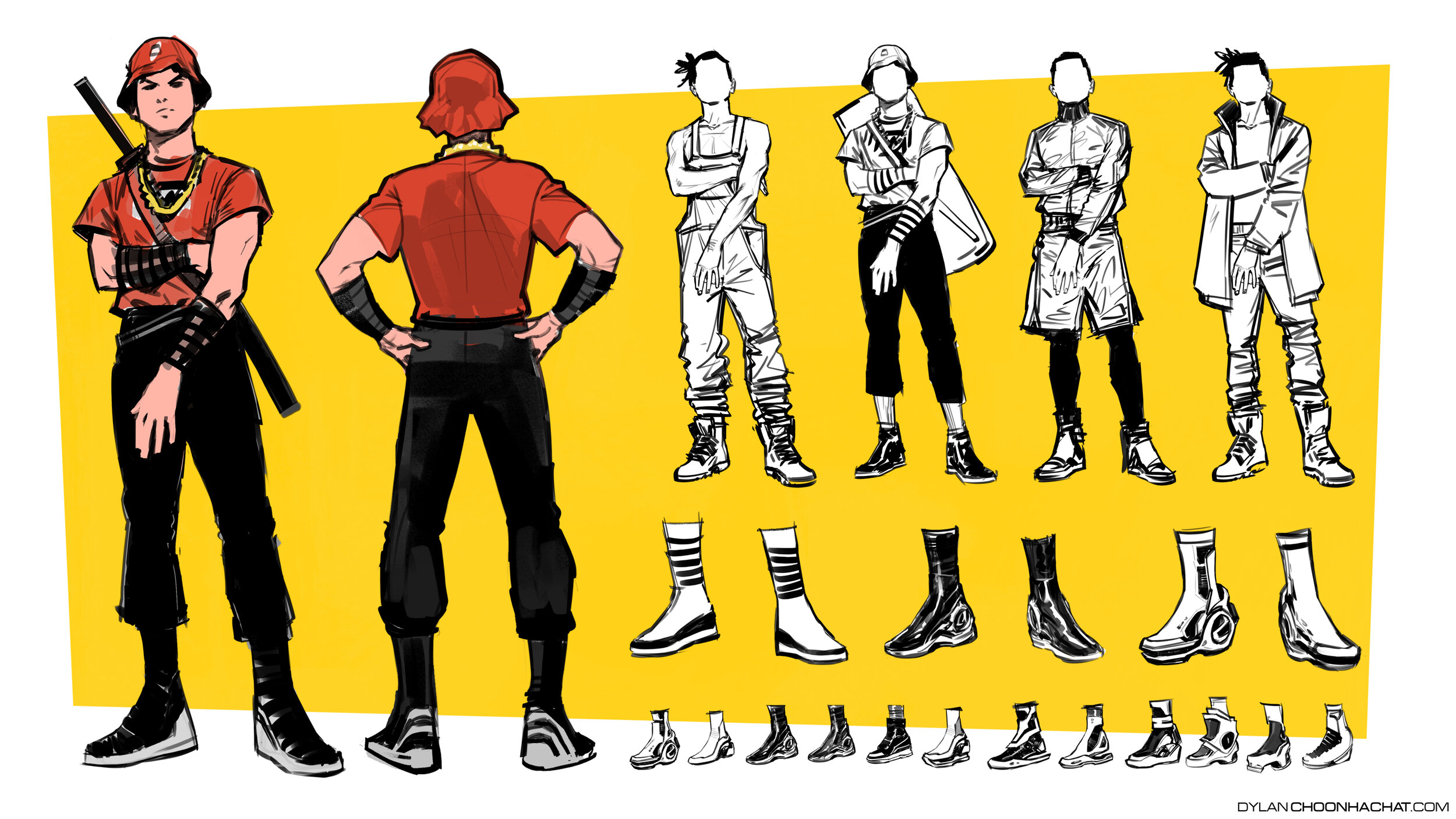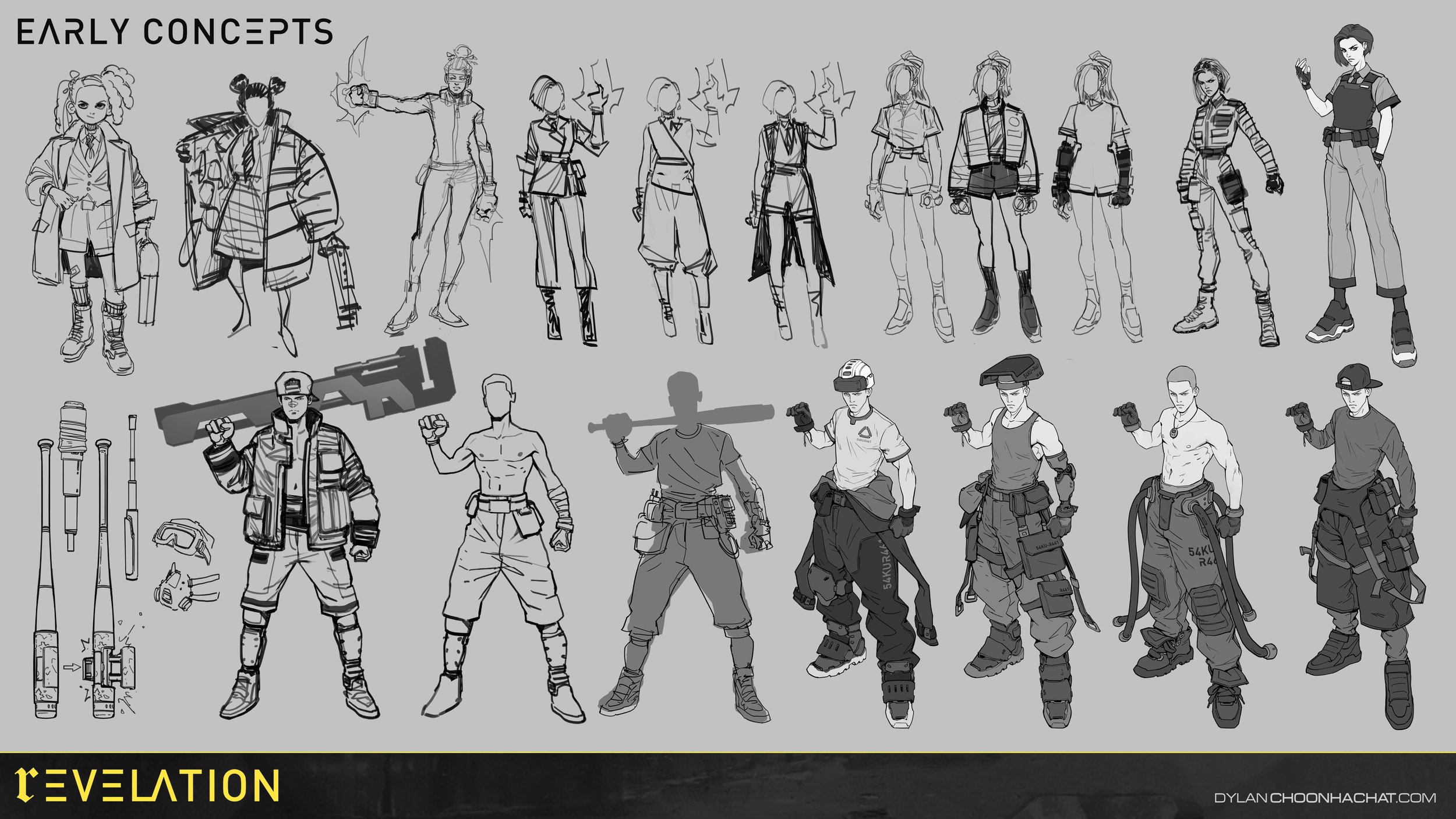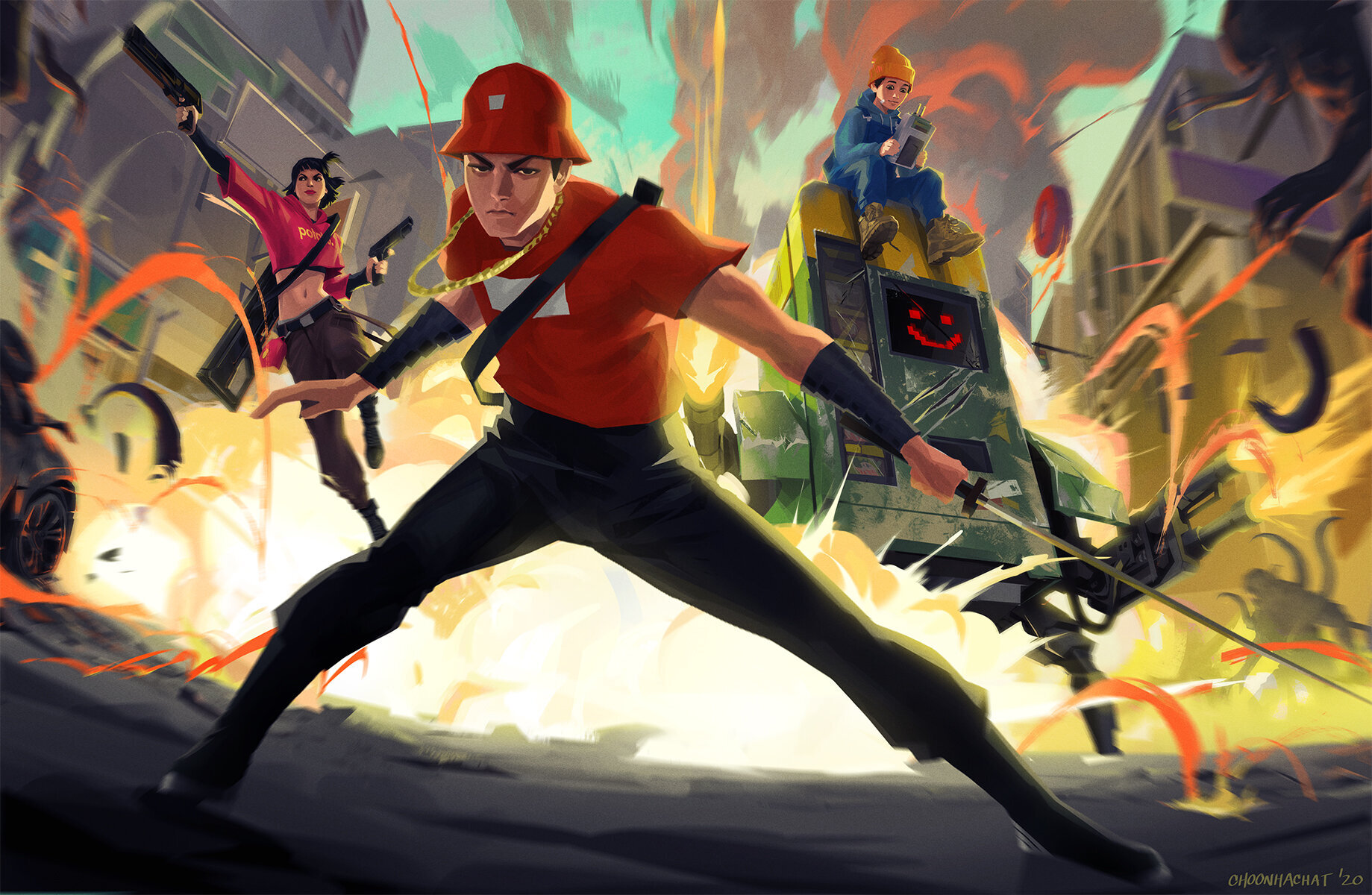There is a lot of confusion about what is considered concept art or illustration. While the line is not always clear and there is a lot of gray area, there are some key differences. When it comes to pursuing a career in the entertainment art fields, the clients or employers are looking for artists with specific skills, and it helps to know the differences between these jobs.
Concept Art/Visual Development
Character concepts and variations for Fevertown
Generally the term “concept artist” is reserved for someone who works in video games and live-action films/shows, and “visual development (vis dev) artist” refers someone who works in animated films/shows. There are some minor differences, but for the most part, they are essentially the same jobs.
Majority of the concept art/vis dev work is done for behind-the-scene purposes during the pre-production period, so the work is rarely seen by the public. The purpose of the work is just to generate ideas and design visuals, so the 3D artists, animators, or lighting artists can then take the designs and translate them into the final product.
The main task of this job is to design scenes, characters, backgrounds, or props. There are jobs that require you to act more like a generalist and design everything that goes into the project – this is usually the case for the in-house full-time positions. Other times, companies will hire artists who specialize in either character, background, props, vehicles, or other specific discipline. Freelance positions are usually more specialized.
Early idea exploration for Revelation
As a concept artist/vis dev artist, you will be doing sketches, idea explorations, mood paintings, blue sky paintings, design variations, expression sheets, call-outs/details, turnarounds/orthos, layouts, and color keys. The more experienced/senior artist will usually be doing the initial/rough concepts that require more decision making, and the less experienced artist will be doing more refined/detailed production artwork that is passed onto the 3D artists to use as a guide.
(Note: the initial mood painting/blue sky painting/rough concept is sometimes referred to in the animation industry as “concept art”, but in the game industry, this is sometimes referred to as “production painting”.)
The goal for a concept artist/vis dev artist is to come up with as many ideas as possible in a short amount of time, so more often than not, highly rendered paintings are not necessary, as long as the ideas are being conveyed clearly. It helps to think of this job more as a designer than an artist.
Because of the nature of the job involves a lot of revisions and changes, concept artists and vis dev artists are usually paid by the amount of time put in the work (hourly/daily/weekly/salary).
Illustration
Promotional illustration art for Fevertown
The purpose of illustration is usually to help promote or sell a product or an idea. There are overlaps and gray areas between concept art and illustration in terms of the visuals, but in contrast to the concept art/vis dev work that is done behind the scenes in the pre-production stage, an illustration is meant to be seen by the public. Because of this, the quality of finish is very important in an illustration.
There are many types of illustration jobs, but some examples of the more popular illustrations are book covers, movie posters, children books, banners, card game illustrations, and loading screens.
There are some full-time illustration positions, but the demand for it is usually infrequent, so most of the time, illustration jobs are freelance. Illustrators are usually paid a flat rate per illustration.
Fine Art
With the popularity of digital art, there is a lot of fine art being created and sold online. The line between illustration and fine art is becoming blurred. When it comes to the visuals, there is little to no separation between them. For the purpose of this article, the difference between illustration, concept art, and fine art is the reason the art is being created.
An illustrator and a concept artist are commissioned/hired to create the work based on a prompt/script/direction in order to help sell or create a product (book, movie, game, etc.). The work is a supplement to the product that is being sold.
On the other hand, a fine artist creates work based on their own vision/purpose, and the audience buys it with the purpose of obtaining the actual art piece itself. Originally, fine art is mostly sold at galleries, in person, or online, but there is an increasing amount of fine art created digitally, and the artists make their earnings from selling prints, being partnered with YouTube, or using subscription-based platforms like Patreon/Kofi.
Other Entertainment Art Jobs
There are other disciplines like animation, matte painting, lighting, texture painting, 3D, and VFX, but they usually utilize different software and require different sets of skills. These jobs are more specialized, and have less overlaps with illustrations and 2D concept art. When applying to jobs, you should cater your portfolio towards the specific positions. You can even have multiple portfolios you send out to different places. Clients and employers will want to know if you can do the job, and it is better if they don’t have to guess. Putting the right work in your portfolio will greatly increase your chances of getting hired!
Resolution Art Studio
If you’d like to learn more about concept art, visual development, illustration, and other entertainment art disciplines, check out Resolution Art. We give feedback on your work and discuss topics that will help bridge the gap for artists who want to work in the industry. We offer classes, mentorships, and a community of aspiring and professional artists. You can also join our Discord by clicking here.


